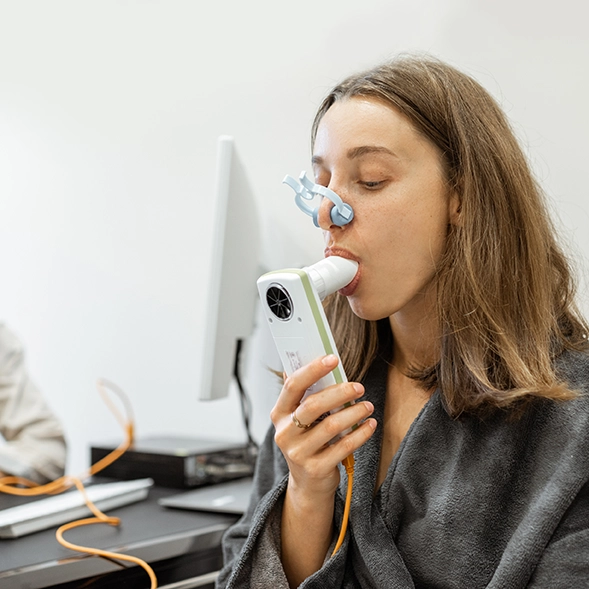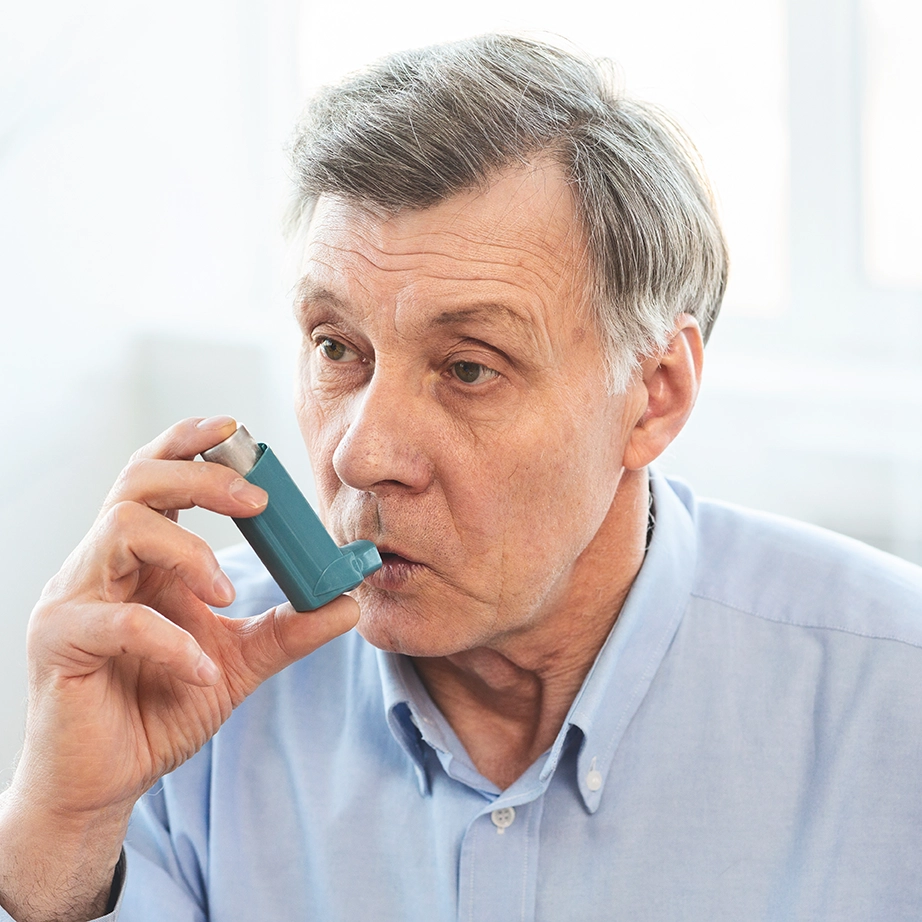Speaker- Min Zhang
Mild and atypical asthma, though commonly regarded as less severe, plays a substantial role in the overall disease burden. Over 45 million Chinese adults aged over 20 were reported to have asthma a decade ago, with mild asthma accounting for 75% of these cases. It is important to note that 30-40% of severe exacerbations are linked to mild asthma, challenging the notion that "mild" asthma is truly mild. The Global Initiative for Asthma (GINA) has acknowledged the difficulty in accurately labeling mild asthma, highlighting its complexity. Cough-variant asthma (CVA), a subtype of typical asthma, is a frequent cause of chronic cough. CVA is particularly prevalent among patients suffering from a cough lasting more than eight weeks, representing one-third of such cases. GINA 2024 officially recognizes CVA as a clinical asthma phenotype, differentiating it from classic asthma. The distinction is based on significant differences, particularly in the inflammatory profile. CVA presents with lower levels of FENO, blood, and sputum eosinophils than classic asthma, indicating that it may require distinct diagnostic and therapeutic approaches.
Chest tightness variant asthma (CTVA) is another common form of atypical asthma, though it often goes misdiagnosed due to challenges in clearly describing chest tightness. CTVA accounts for over 12% of patients who test positive in bronchial provocation tests. One of the biggest challenges in managing mild and atypical asthma is underdiagnosis, which is a significant issue. The diagnosis rate remains low (30%), largely due to reluctance from both patients and doctors to use inhaled corticosteroids (ICS), even when asthma is confirmed. The results are insufficient treatment, frequent exacerbations, and increased hospitalizations. Asthma diagnosis is based on variable symptoms and airflow limitations. However, diagnosing mild asthma is difficult due to its subtle symptoms. Two-thirds of patients do not report their conditions, and when they seek medical help, many physicians may not recognize mild or atypical asthma. Even when diagnostic tests like bronchodilator tests are used, the positive rate for mild asthma remains low, less than 10%.
The ERS guidelines recommend lowering the threshold for improvement in Forced Expiratory Volume in 1 second (FEV1) from 12% to 10% in the bronchodilation test (BDT). The adjustment aims to enhance diagnostic accuracy in identifying mild and atypical asthma. The studies have shown that even patients who test negative in the bronchodilation test can demonstrate significant improvement in FEV1 and small airway function following treatment, compared to those with negative treatment outcomes. It suggests that for patients with normal FEV1 and a negative bronchodilation test, spirometry changes—even if below the 12% threshold, such as 3.5%—can still be significant. When combined with fractional exhaled nitric oxide (FENO) measurements, these changes may help predict treatment response. A slightly lower improvement rate may still be clinically relevant in such cases. Bronchial provocation testing remains the most crucial diagnostic tool for mild and atypical asthma, though it faces several challenges. Methacholine is commonly used for the test, and expert consensus has emphasized its clinical application. The studies indicate that a simple spirometry test may predict bronchial provocation test outcomes. Specifically, patients with positive bronchial provocation tests tend to have lower FEV1 than those with negative results, though still within the normal range. Additionally, small airway function deteriorates significantly in these patients, and FENO levels are elevated. It underscores the role of small airway dysfunction and FENO in predicting positive bronchial provocation test results.
Combining FEV1 increase, FENO rise, and a decrease in Maximal Mid-Expiratory Flow (MMEF) can predict positive bronchial provocation tests. It allows for targeted treatment without excessive ICS. The model's high area under the curve supports its diagnostic accuracy. When spirometry is not possible, FENO alone can distinguish corticosteroid-responsive cough or CVA from other chronic coughs, though it lacks sufficient sensitivity and specificity for standalone diagnosis. Current guidelines recommend using low-dose ICS-formoterol as needed or low-dose ICS maintenance for patients with mild asthma. At the same time, those with ICS phobia or allergic rhinitis might benefit from leukotriene receptor antagonists (LTRA). However, some patients may need more intensive treatment, such as maintenance and reliever therapy, especially if they have factors like smoking, impaired bronchoconstriction perception, or recent severe exacerbations. The SYGMA 2 trials demonstrated that ICS maintenance provided better symptom control and lung function compared to ICS-formoterol as needed. ICS-formoterol maintenance in the first month improved lung function, eosinophil inflammation control and symptom control, regardless of age, sex, or baseline lung function. It suggests that initiating treatment with ICS-formoterol maintenance might be more effective, with the possibility of transitioning to as-needed therapy later.
For treating CVA, guidelines recommend using ICS combined with long-acting beta-agonists or ICS alone for at least eight weeks as the first-line option. Alternatives include LTRA and short courses of oral steroids. However, a one-size-fits-all approach is inadequate for atypical or mild asthma. Recent studies suggest categorizing CVA into distinct phenotypic clusters based on clinical and pathophysiological data, allowing for more personalized diagnosis and treatment. Guidelines and expert consensus provide structured approaches but underscore the need for further clinical trials. The Longitudinal Investigation of Functional and Therapeutic Responses in Asthma multicenter cohort study aims to assess the predictive value of variable airflow limitation in asthma diagnosis. The study, involving over 1,000 patients from 15 centers, includes bronchial provocation and dilation tests, with subsequent spirometry after one month of treatment. Interim results indicate that relying solely on symptoms can lead to overdiagnosis in more than 50% of patients. Combining symptoms with variable airflow limitation tests enhances diagnostic accuracy, with bronchial provocation tests proving the most effective. FEV1 response to treatment and bronchodilation tests further refine prediction models, improving diagnostic precision and treatment outcomes.
Previously, challenges such as low diagnosis rates, inadequate treatment, and poor asthma control were evident. Improvements are anticipated with advancements from clinical trials, updated guidelines, and expert consensus. Enhanced diagnostic methods and more precise treatments will lead to better asthma control, fewer exacerbations and hospitalizations, and a reduced overall disease burden.
European Respiratory Society Congress 2024, 7–11 September, Vienna, Austria.




